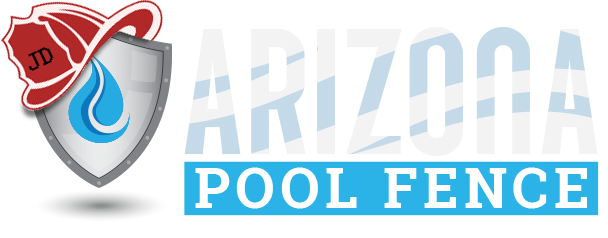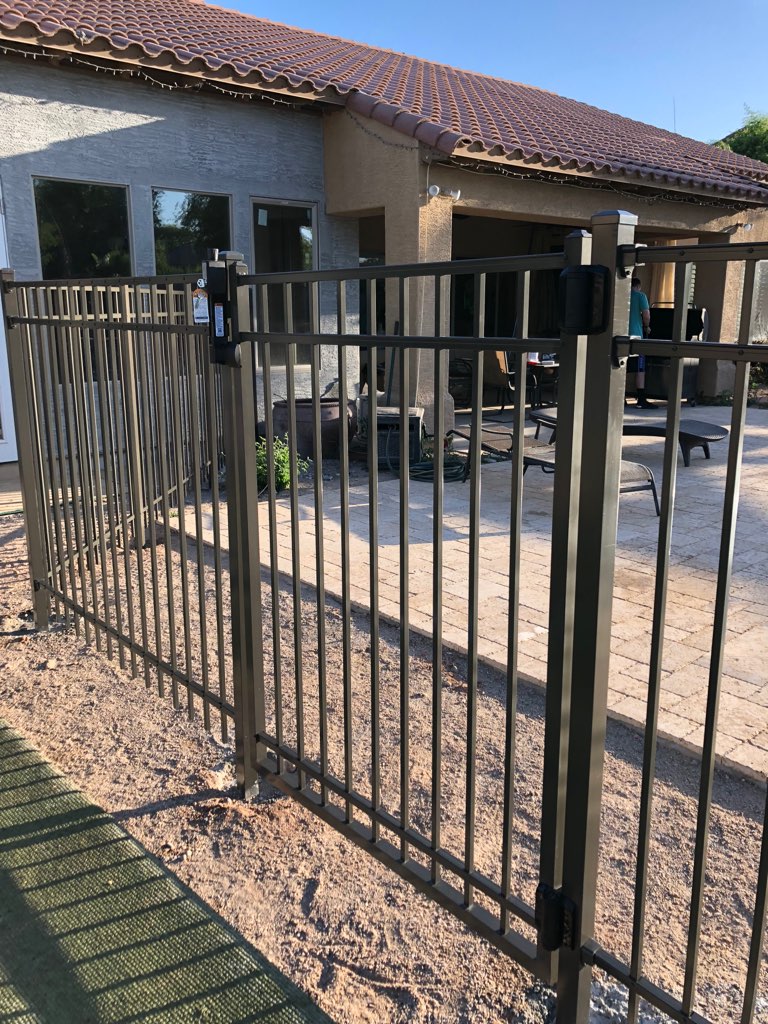We install the highest quality pool fences, pool covers, and safety gates.
Arizona Pool Fence
1513 W Hatcher Rd, Phoenix, AZ 85021
-
MY CART
No products in cart.
June is Check Your Pool Gate Month—Here are Some Essential Pool Safety Tips to Keep in Mind
With the official start of summer, the month of June is a great time to ensure that your pool area is ready for a safe and enjoyable swimming season. D&D Technologies, a leading manufacturer of gate hardware, has designated June as “Check Your Pool Gate Month.” The purpose of this initiative is to raise awareness of pool safety best practices and encourage all pool owners to check their pool gates to make sure they are in sound condition and are functioning properly.
As a long-time partner of D&D Technologies, Arizona Pool Fence is proud to help promote Check Your Pool Gate Month. Considering that drowning is the leading cause of unintentional death in children between the ages of one and four—and the majority of kids who drown in backyard swimming pools gain access to the pool area when there is either no fence or a faulty fence or gate—the importance of proper pool fences and gates cannot be overstated. As you check the security of your pool gates, here are some of the most important things to look for:
- The gate should open outwards, away from the pool area, in order to reduce the chances of a child pushing it open.
- Gates should be self-closing and self-latching, with the latching mechanism located out of reach of small children. Under Arizona law, this means at least 54 inches above the ground. In addition, fences should be at least five feet tall and should completely enclose the pool area, with no gaps through which an object four or more inches in diameter could pass. There should be no climbable objects or structures near the fence.
- Gates should be equipped with reliable and tension-adjustable hinges.
- The latch should not be able to be key-locked in the “open” position or opened using implements or force.
- For both the fence and the gate, the maximum clearance from the ground surface should be no more than four inches.
- The gate should latch from any position, including by simply resting on the latching mechanism.
- Gates should never be propped open.
- Any missing, loose, or rusted screws in the fence or gate should be replaced immediately.
- Regularly inspect and physically test your gates to ensure that they are closing and latching properly. Keep in mind that pool barriers are only effective if the gate and its hardware are functioning as intended.
- Gate latches and hinges should be manually adjustable to accommodate gate movement and closing speed.
While properly functioning pool fences and gates are crucial, nonstop adult supervision whenever children are near the pool is the most effective way to prevent drowning. Here are a few other important pool safety tips to keep in mind:
- When the pool is not in use, remove all toys and floats from the pool area as these can serve as a temptation for children.
- Lock all pool chemicals in an area far away from where children play.
- Ensure that a supervising adult is within arm’s reach of young children at all times and is paying close attention to them.
- Install anti-entrapment drain covers and safety release systems in pools and hot tubs.
- If a child is ever missing, check the pool area first. When it comes to drowning, even a few seconds can mean a difference between life and death or permanent brain injury.
- If your home has doors and windows with direct access to the pool area, consider installing alarms that will sound if someone tries to open the door without disabling the alarm.
- Consider other options for securing the pool, such as safety nets or covers.
- Enroll children in swimming lessons starting at a young age. According to the American Academy of Pediatrics, babies as young as one year old should take swimming lessons if they are regularly exposed to water and show signs of swim readiness. This can help equip kids with the knowledge and abilities needed to stay afloat if they ever become endangered in the water. In addition, older kids and adults should take CPR lessons in the event of an emergency.
- Consider installing a landline phone in your pool area. This will ensure that a reliable phone is always close at hand if you need to dial 911.
- Have life-saving equipment, such as a shepherd’s hook or life ring, close to the pool. For children or anyone else who is not a strong swimmer, keep in mind that “swimmies” do not provide an adequate safeguard against drowning—life jackets are best.
At Arizona Pool Fence, we offer a variety of products designed to enhance safety around the pool. With our pool gates, we can install the key-lockable Magna Latch® from D&D Technologies. Featuring patented magnetic technology, this latch is considered the safest and most trusted on the market and is specifically made for toddler-resistant gates. Due to the design, a child would not be able to enter through the gate even if they were somehow able to pull the MagnaLatch. Our team will ensure that your new pool gate complies with all local and state regulations, and we can retrofit the gate to any fencing, block, or stucco to ensure a seamless appearance.
In addition to our gates, we also offer a selection of pool fences. From classic wrought iron (available in multiple colors) to ASTM-certified mesh to sleek, eye-catching glass, our fences create a reliable barrier to prevent children and pets from wandering into the pool area without supervision.
Could your pool gates and other barriers use an upgrade this Check Your Pool Gate Month? Contact us today to learn more about our products or schedule a free in-home consultation!

Maloney’s Pool Care and Child Barrier Fencing- DBA Arizona Pool Fence - ROC 203777
Website by: SP Marketing Experts













